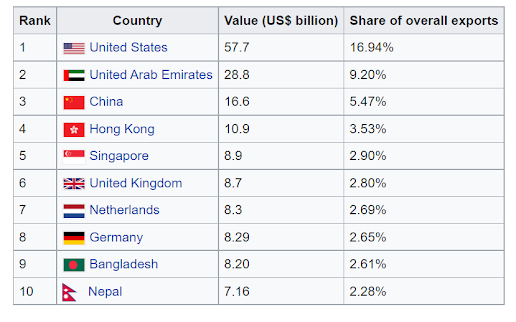India-Australia Economic Cooperation and Trade Agreement
Recent years have seen remarkable growth in the trading relationship between India and Australia, fuelled by the many complementarities between the two economies. Two-way trade in goods and services has grown in value from $13.6 billion in 2007 to $24.3 billion in 2020.
- In February 2022, India and Australia announced that they were going to sign such an agreement.
- The negotiations for India-Australia ECTA were formally re-launched in September 2021 and concluded on a fast-track basis by the end of March 2022.
- The bills easily passed the House of Representatives on Monday and the Senate made them law.
- The deals need to be ratified by the respective British and Indian parliaments before they take effect.
- Neither nation has yet done that.
Free Trade Agreement (FTA)
A Free Trade Agreement (FTA) is an agreement between two or more
countries to reduce trade barriers in imports and exports among them. These agreements deal with the determination of the tariffs and duties that are imposed by the countries on imports and to reduce trade barriers and thereby strengthen bilateral or multilateral trade relations. With FTA, goods, and services can be exchanged across international borders with limited or no government tariffs, quotas, or subsidies. A free-trade policy may simply be the absence of any trade restrictions. The idea of FTA is the opposite of the concept of trade protectionism or economic isolationism. In the current world, free trade policy is often implemented through a formal and mutual agreement between the nations involved.





Post a Comment
0 Comments